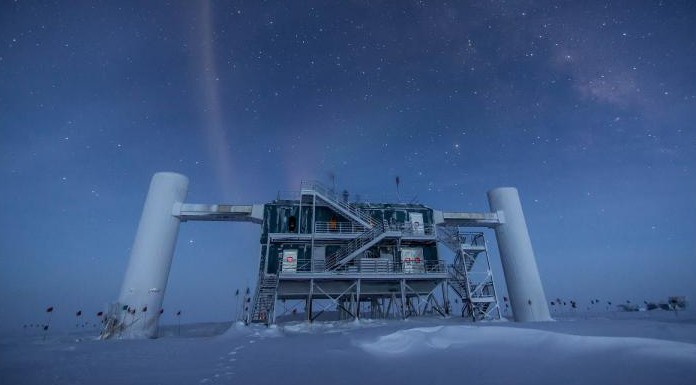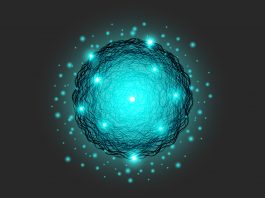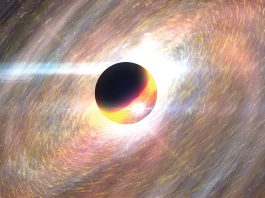Physicists have discovered that all high-energy cosmic neutrinos are born by quasars – which are extremely luminous active galactic nuclei that contain supermassive black holes.
Scientists of the P. N. Lebedev Physical Institute of the Russian Academy of Sciences (LPI RAS), the Moscow Institute of Physics and Technology (MIPT), and the Institute for Nuclear Research of RAS (INR RAS), studied the arrival directions of astrophysical neutrinos with energies more than a trillion electronvolts (TeV), discovering that all of them are born near black holes in the centres of distant active galaxies powerful radio sources. Previously, only neutrinos with the highest energies were assumed to be obtained in sources of this class.
To study neutrinos, an international collaboration of scientists has built an ice telescope in Antarctica, the Cherenkov IceCube detector, with a volume of one cubic kilometre. In Russia, INR RAS and JINR are now completing the construction of the Baikal GVD water telescope in Lake Baikal, the volume of which has already reached 0.4 cubic kilometres. Now data acquisition is underway on the running part of the facility, which had already been put into operation. These installations study the sky in different hemispheres: North and South.
Using the IceCube telescope, the scientists initially chose to analyse a range above 200 TeV to study which direction these neutrinos came from. It turned out that a significant part of them was born in quasars, identified by radio telescopes by their high brightness. More precisely, neutrinos were born in the centre of quasars, where massive black holes are feeding their accretion disks. There is a connection between the powerful bursts of radio emission in these quasars and the registration of neutrinos by the Ice Cube telescope. Since neutrinos travel through the Universe at the speed of light, flares come to us at the same time as neutrinos.
The birthplace of neutrinos
In their new article published in The Astrophysical Journal, Russian scientists argue that neutrinos of energies in the tens of TeV are also emitted by quasars. The team found that almost all high-energy astrophysical neutrinos are born in quasars. Some neutrinos are born in the Earth’s atmosphere, and even in the Ice Cube detector itself during the interaction of cosmic rays with matter.
Chief researcher of INR RAS and co-author of the discovery from LPI and MIPT, Yuri Kovalev, said: “It is amazing, since for the production of neutrinos with energies that differ by a factor of 100-1000 different physical conditions are required. The mechanisms of neutrino production in active galactic nuclei discussed earlier worked only at high energies. We have proposed a new mechanism for neutrino production in quasars, which explains the results obtained. While this is an approximate model, it is necessary to work on it, to carry out computer simulation.”
This year, the scientists will collect the first data from the Baikal GVD telescope and analyse it together with the data from RATAN-600 and the world’s radio telescope networks, which will allow them to examine the centres of quasars in detail.









